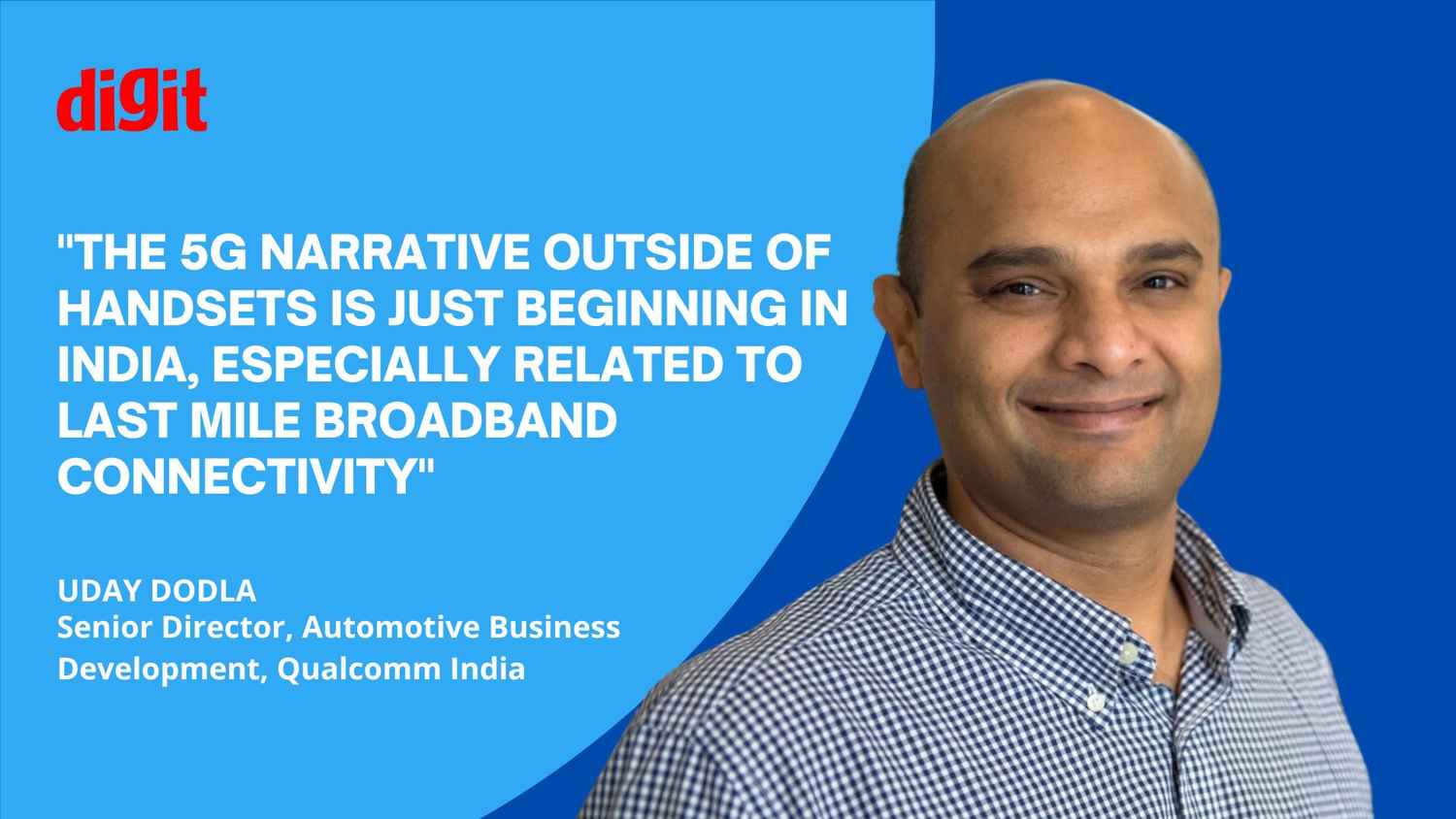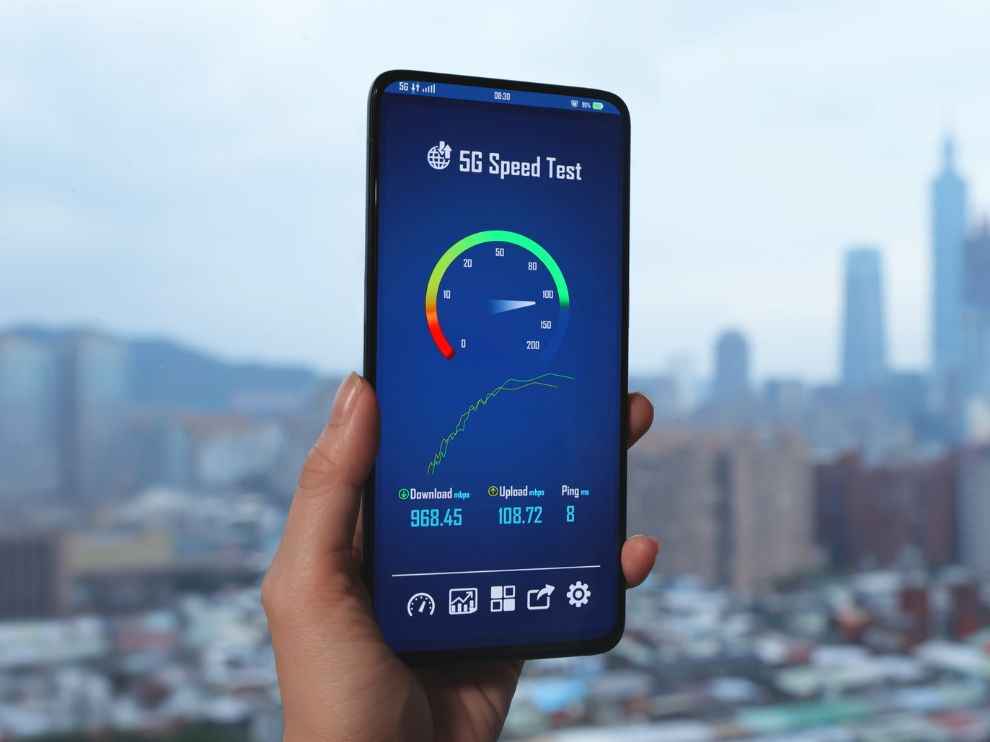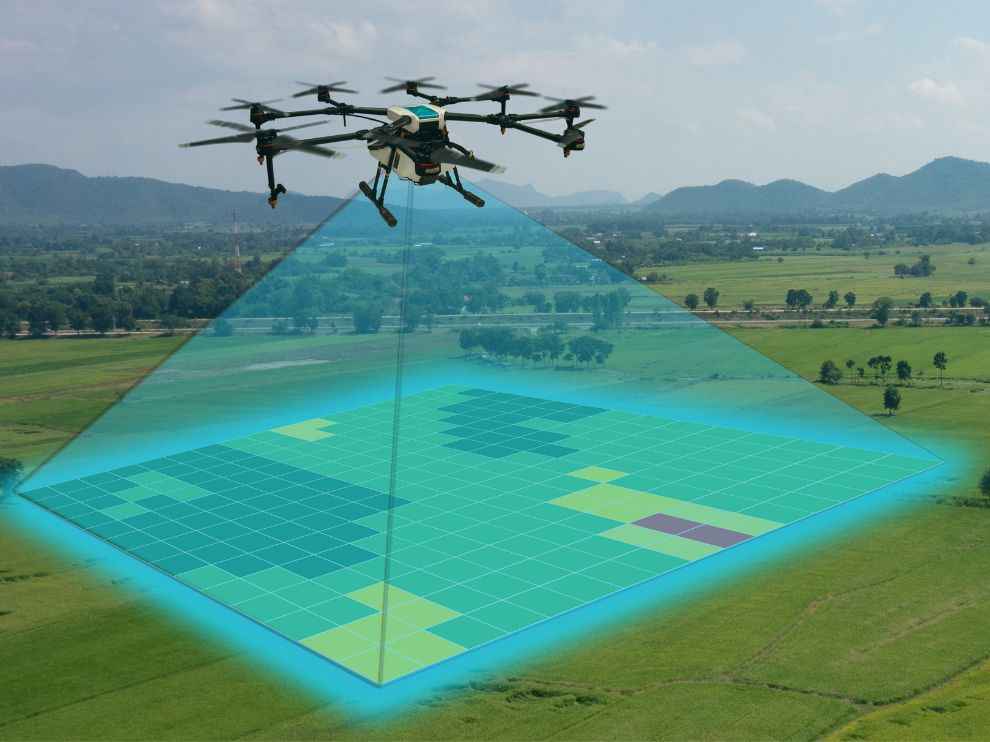Qualcomm’s Uday Dodla on AI and 5G rollout in India: What’s next?

With almost a year since 5G officially started rolling out in India, we spoke with Qualcomm India to get more insights into how 5G is going ahead – both on the handsets as well as telco side, even as 4G only devices approach their sunset.
“I think like any other G transition, if you look back at what happened when 4G was introduced, the 5G transition is going exactly according to plan. After initial test beds came up in a few cities, handsets started coming in and then after the 5G networks got turned on, you have that critical mass multiplying very rapidly which is what’s happening in the India context as well,” said Uday Dodla, Senior Director, Automotive Business Development, Qualcomm India.
In fact, with the sales share of 5G smartphones in India having crossed the 50% mark for the first time in April 2023, with brands like Samsung and OnePlus capturing a third of the share, according to data by Counterpoint Research, the mix of handsets having 5G vs 4G has rapidly increased to 5G, according to Uday Dodla as well. “We are now hearing that this holiday season is when OEMs are expected to clear their inventory of 4G mobile phones, after which we'll probably not see much 4G-only mobiles being sold anymore,” he said.
That’s the 5G story till date, according to Qualcomm India. And that’s mostly a handset story. “We feel the 5G narrative outside of handsets is just beginning in India, especially related to last mile broadband connectivity. You know, with fixed wireless access, we are already seeing operators outside India adopting it very aggressively, specifically in the US for home broadband connectivity. We're going to see something very similar happen in India as well,” Dodla emphasised.
That’s right, apart from handsets 5G will initially be a broadband story. In terms of last mile broadband connectivity, where it's probably impossible or difficult to get fibre connection to your home, you place a wireless box, power it on and bingo, right? You suddenly have a signal, and it sure beats any kind of deployments that fibre would need – like all sorts of digging everywhere.
Qualcomm India’s Dodla calls it the next phase of 5G growth, where some of the other services that 5G has promised are starting to show up in terms of industrial automation 5G for non consumer devices such as drones, for example.
Drones and 5G
Qualcomm’s Flight RB5 5G platform for drones, which it claims is the world's 1st 5G and AI drone platform with Wi-Fi 6 connectivity, is being used for a variety of scenarios, according to Uday Dodla. “It supports everything from a simple drone to connected drones, to smarter drones with onboard AI, let's say a drone with five cameras – like a surveillance drone that's hovering – streaming all of that video concurrently will be a challenge. We have a lot of inference already built-in on the drone itself, so only the most relevant change, let's say there's a speeding car that gets detected very quickly, so only that information is sent down. These are some use cases of drone companies, which are growing in India,” mentioned Dodla.
Their platform supports drones that don’t necessarily need 5G, drones that don’t have high speed data transmission requirements but just want bandwidth for command and control operations over a large area, Dodla suggested. “We provide long range Wi-Fi beyond visual line of sight which lets you connect to a drone that’s more than 20 km away, which you can’t do in existing Wi-Fi technologies,” he said, as beaming Wi-Fi signals over long distances is detrimental to the already limited power capacities of tiny drones. This is an optimised way of staying connected to and commanding drones that are quite a long distance away, a solution that quite a few of Qualcomm's drone partners already use.
“With the success of the Aero India in Bengaluru, a lot of drone companies want to deploy ad-hoc networks – which essentially means deploying a private 5G network in an area where you can’t deploy a 5G network, because there are no towers. So you start hovering these drones in the air that act as 5G transmitters and receivers to create a bubble – whether across a few mountains – which can be quickly brought down after completion of work,” Dodla highlighted.
This is an indication of 5G and drone use not just on the client front but also as a network node, giving rise to interesting use cases of these technologies. Imagine a swarm of drones forming a mesh network, either for an entertainment company or the military, “Not necessarily on the receive side but also on the transmission side,” he emphasised.
Rural 5G coverage
Not so much yet in India, specifically, but Qualcomm is an uptick in 5G mmWave deployments in rural sectors. “Much to our surprise, there are deployments of 5G mmWave, for example, in rural Americas and rural Australia. You typically think mmWave can only do 100-150 metres max in terms of range. Yes, that may be the case in dense buildings and urban centres, but in the rural areas where you don't have a lot of these obstructions, we've been able to see kilometres worth of range for 5G mmWave,” Dodla mentioned.
The gains are huge, he further said, because for a fraction of the cost, it enables broadband access to rural communities, according to Dodla. “Currently, if you look at our penetration map around the world, the dense urban areas are very well covered by all these operators. But it’s the rural areas which are very sparse, right, and, and they're relying on satellite service or no service.But now operators can go with millimetre wave solutions, where a single mmWave transmitter with directional antennas can cover probably 20-30 homes. It instantly brings good broadband coverage, which can potentially improve their economy with access to online services.”
Whether it’s rural 5G deployments or public private partnerships, Dodla told me how Qualcomm is engaging with the Indian government. “With regards to the issue of safe and reliable devices in India’s 5G infrastructure, we have provided a list of best practices (to the Indian government). We've had several sessions with key officials in MeitY and the Department of Telecom, where we talked about current vulnerabilities, where do they exist, where are they typically found, in what applications, how are backdoors exploited, what are some of the instances where backdoors have been exploited? When it comes to critical infrastructure deployments, we want to make sure that the decision makers in the government know about these things and how to navigate them,” emphasised Dodla.
A lot of this work was done throughout 2020 in the middle of the pandemic, suggested Dodla, as they put together a white paper to educate key officials in the right government ministries which actually regulate the telecom-related sector.
AI on device
Qualcomm’s very well known for its modem technology, but not as well known for some of the other stuff that we do very well, according to Dodla – which is AI on device. When everyone and their old grandmother is talking about AI, he mentioned how AI is something that Qualcomm’s been doing for a long time.
“We’ve had AI on our camera platforms, in our robotics platforms, and we’ve spoken in the past how a lot of this AI stuff can’t be cloud native, because it’s too expensive, and that’s why on-device generative AI is a cornerstone of our product strategy,” he emphasised. Qualcomm has invested a lot of effort into this area, which we’re going to see in products launching later this year – instances of Stable Diffusion and generative AI use cases that aren’t cloud native but device native. “We’re looking forward to seeing that, as AI’s going to be a big part of what we’re going to do in the future,” said Dodla. It’s all about enhancing existing product lines, as on-device generative AI solutions Qualcomm’s building starts going into people’s hands.
In terms of challenges to 5G and AI roll-out, the only pain point is actually managing demand, believes Uday Dodla. “As an ecosystem, we have to figure out how to showcase the advantages of automation using connected technologies, a prime example of which is smart electricity metres. These connected metres have high availability and reliability requirements, which is supported by our cellular technology. The only thing we have to crack is to create the demand for these devices, by talking more about their benefits both for consumers as well as power companies,” he said.
The second thing Dodla highlighted is to work with our partners in the operator space to ensure access technologies don't get fragmented. “We have too many choices right now in the form of LPWA, LoRaWAN, RF Mesh, and more. And that brings me to my third concern, where we are seeing these non-standardized solutions getting deployed, which is something of a challenge that we need to overcome as an industry going forward,” Dodla emphasised.
Jayesh Shinde
Executive Editor at Digit. Technology journalist since Jan 2008, with stints at Indiatimes.com and PCWorld.in. Enthusiastic dad, reluctant traveler, weekend gamer, LOTR nerd, pseudo bon vivant. View Full Profile








